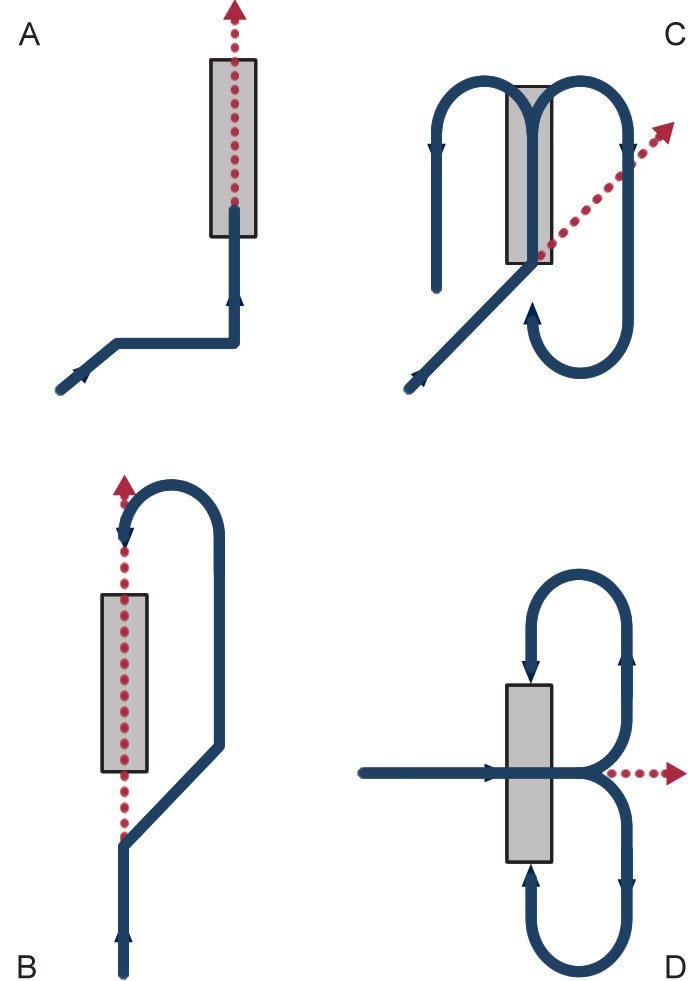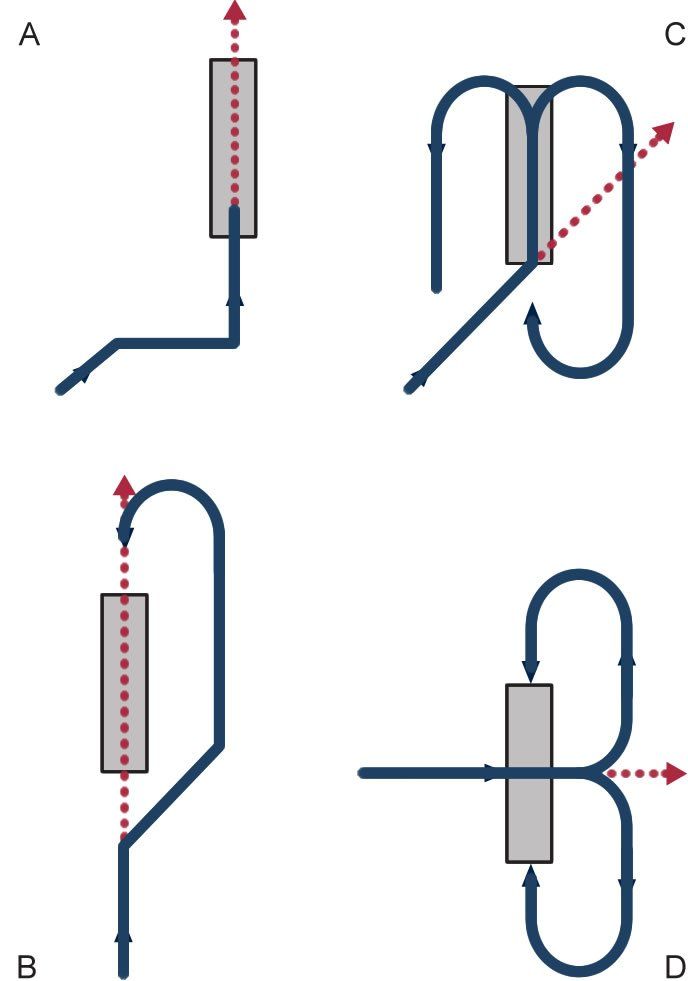
One of the ways a circling approach can go awry is when pilots get in over their heads and lose track of how to fly the missed approach procedure to get out of their situation. Even though the airport environment is in sight, it doesnt mean we always can reach the runway out of a circling-to-land maneuver. When its time to admit defeat and go around for another try, reorienting ones thinking to find the approach procedures final approach course and then follow the missed approach can be daunting.
In the diagram at right, weve reproduced the four common circle-to-land maneuvers described in the FAAs Instrument Flying Handbook, FAA H-8083-15B. These patterns are described by the blue lines. These arent traffic patterns, but they do cover most of the runway alignment challenges pilots face during the circling maneuver.
We added the dashed red lines denoting the likely path to be flown on the missed approach, if one is necessary. Each approach is different, of course, but weve yet to see an approach where a 180 is required at the FAF to execute the miss.
The standard caveat applies: To properly execute any missed approach, the aircraft must begin at the FAF, be aligned with the final approach course and be at or above the published minimum altitude (DA or MDA, or circling minimum). Generally, turning back toward and joining the final approach course will place the aircraft where it needs to be to initiate the miss.




